 Williams, 71, died in Barbados on December 11. Pamela was one of two children Williams had with his first wife, Elsie Ribeiro, and was named Elsie after her, though she was known by her middle name. Williams also had a son, Alastair, with Ribeiro. He had another daughter, Erica Williams-Connell, with his second wife, Soy Suilan Moyou. Pamela’s funeral took place yesterday at the Chapel of Coral Ridge Memorial Gardens in Barbados. She will be cremated on Friday. Former People’s National Movement stalwart Ferdie Ferreira said he did not interact with Pamela as much as he did with Erica and Alastair, but said he remembered Pamela as a “decent, classical person” and was aware she had a “very powerful academic career.” Pamela was a retired regional representative of the Inter-American Development Bank and a former Caribbean Development Bank employee. She lived in Wyndham, Strathclyde, St Michael in Barbados.  Today the Chamber of Industry and Commerce is pleased to profile the runner-up in the Small to Medium Entrepreneur category (sponsored by EY) of the 2018 Champions of Business. In 2004, Allana and her husband Bertie Steuart wanted to raise funds to purchase a refrigerator for a community member in need. Instead of doing the usual barbecue fund raiser, Bertie and Allana decided to make pepper sauce using Bertie’s unique recipe. They made 400 bottles of pepper sauce which sold out in record time. After the fundraiser, they started receiving calls for pepper sauce orders and Allana convinced Bertie to make another batch. This second batch sold just as quickly. The demand was continuous so the Steuarts continued production at their home. Eventually, Allana started distributing on a small scale to local restaurants and mini marts. In 2008, a breakthrough came when Tony Roma’s approached her to supply its restaurant on an exclusive basis. In August 2012, the company landed its first major supermarket – Massy Stores (then Hi-Lo). This was the impetus to increasing the brand’s presence in the retail market. Then, in November 2014, PriceSmart approached the company to be its sole pepper sauce brand. This forced the company to scale up their operations. They subsequently moved to Woodbrook. With new staff added and a larger facility, the company was able to increase production significantly. When Allana’s son Logan joined the business in 2015, sales increased significantly, and the company needed to find additional sources of pepper. Logan was instrumental in negotiating supplies from a local farmer with large acreage, who was able to meet the increased demand and with whom Bertie’s has forged a strong working relationship. Logan has also been instrumental in formalizing the company’s operations, its processes and increasing distribution and brand awareness. In 2016, the company moved to its current location in Aranguez. To date, Bertie’s sauces are sold at most major supermarkets like Xtra Foods, JTA and Penny Savers in Tobago and other retailers nationwide. The product is also served at an increasing number of restaurants and restaurant chains locally. Bertie’s pepper sauce has become a household name in Trinidad and Tobago and is one of the most popular commercial pepper sauces on the market. In spite of the company’s success, it has remained true to the original Bertie’s recipe and maintained its commitment to using only fresh local peppers. The Bertie’s product line has expanded and now includes their original Bertie’s Pepper Sauce, a Pimento Sauce and a Scorpion Pepper sauce. Bertie’s continues to be a major buyer of hot peppers and is proud to be a supporter of local farmers. They are “proudly TT” and this is reflected on all product packaging. Allana and Logan are currently exploring possibilities for the export market, starting with the Caribbean. Source: Newsday, Dec 20, 2018 The original purpose of the Royal Botanic Gardens was not for taking wedding pictures and having family outings.
Although the space was open to the public, it was a scientific area for the sole purpose of benefiting the people of Trinidad. Historian Gerard Besson told Sunday Newsday the Royal Botanic Gardens was created in 1818 by Sir Ralph Woodford, who was the Governor of Trinidad from 1813 to 1829. He was the first civil governor with all his predecessors being military men. “He was concerned with developing the island. So he brought with him a group of young people, like himself, who had an interest in modern times, modern for those days, and was interested in the overall development of the place.” One of those men was botanist David Lockhart, who was appointed as first superintendent and was responsible for the layout of the gardens. With the government’s money, Woodford bought a 200-acre estate from Henri Peschier of St Ann’s for £9,160 which was a substantial amount of money at the time. Those 200 acres included the land that is now the Queen’s Park Savannah and the Botanic Gardens. He cleared the area of forest leaving some local plants, made the area now known as the Savannah into a public space, and began laying out a botanic garden. Lockhart, under Woodford, started importing rare trees and plants from all over the world including India, Africa, the far east, other tropical areas. “He (Woodford) was creating a botanical environment. He was creating a park where the people of the town, because it was not yet a city, would be able to enjoy the scenery, the rolling lawns, and would be able to enjoy seeing strange, exotic trees from different parts of the world that would have fruits and flowers–a different kind of environment. From all accounts it was a great success from the very beginning.” Besson explained that the gardens was a place where rare plants and trees were brought to see if they would thrive and could be propagated in this part of the world for industry and agriculture. They were brought with a purpose–to be cultivated so cuttings could be procured and transferred to the various estates on the island for valuable timber and food. He said the samaan trees were brought to provide shade and comfortable grazing for cattle so they could produce more milk. In fact, he said there were so many samaan trees in St Clair because the whole area, from around Wildflower Park in St Clair to Tragarete Road, was pasture land called the Government Farm, where many cattle grazed. Breadfruit in the gardens The first breadfruit tree in Trinidad was also planted at the gardens. It was brought from an island in the Pacific because poor people needed food and breadfruit was filling and healthy. “Woodford made a lot of advancements. He did a lot of things that really made a very big difference to the overall environment.” He said over time, the Botanic Gardens was integrated into the work of the Imperial College of Tropical Agriculture (ICTA), the forerunner to the University of the West Indies, St Augustine campus. The ICTA created a herbarium where it kept a record of all the species of the different plants and trees in Trinidad, both local and imported. “The very economy of Trinidad in the days before the exploration of oil was based on agriculture so it was very important to have, in Trinidad, an experimental station like the Botanic Gardens. And it was very important to have a college of agriculture, which became, over time, the university where agriculture would be studied, experimented with, and treated as a science. So the connection between the university and the Botanic Gardens was once a very strong, living connection.” According to information from the Ministry of Agriculture, Land and Fisheries, after the death of Lockhart in 1845, there were several others who contributed to the uniqueness of the gardens. These included William Purdie from 1846 to 1857, Dr Herman Kruegar, a trained apothecary, and Henry Prestoe from 1864 to 1886. The rise of tropical agriculture From 1878 to 1879, the gardens expanded with purchase of St Clair Estate and there was an increased collection of ornamental plants obtained from Kew and other parts of the world. Many new plants and crops of potential economic value were also introduced, distributed and exchanged throughout the world including cocoa, coffee, tea, mango, mangosteen, palms, varieties of sugar, rubber, and more. During John Hart’s appointment to superintendent from 1888 to 1908 there was a renewed search for alternative cash crops for the colony, including spices, ginger, tobacco, citrus and various types of timber. The ministry document stated, “In 1897, The Norman Commission defined the role of the Botanic Gardens: The introduction and experimental cultivation of economic plants to secure improved varieties of such plants, and especially of sugar cane. It should comprise a branch for the teaching of tropical agriculture, and should form a centre from which teachers would be sent to give practical lessons in the cultivation of tropical plants and the selection of suitable locations for growing them…In the mean time the Botanical Department in Trinidad should encourage the introduction and growth of the better descriptions of fruit, and give instructions as to the best means of cultivation and packing fruit for export.” Over the years, however, things changed. Besson noted that trees that were over 200-years-old were cut down for various reasons, including that some were rotting. However, he said they were not replaced with other exotic trees but with “common” plants like crotons and bougainvillea. “So the idea of keeping it as a place where you would bring a rare tree from a distant place and plant it has gone. It seems the people who look after it today don’t have those ideas in mind. They just want to keep it as a park rather than a scientific place.” One of the oldest botanic gardens Speaking at the official postal stamp launch in commemoration of the bicentennial anniversary of the Royal Botanic Gardens on December 6, Agriculture Minister Clarence Rambharat said we were living in a society where many people lacked foresight and were “not even planning for the next two years, let alone, 200.” He said, “The Royal Botanic Gardens has a tremendous history but perhaps the most important thing we can do in its 200th year is to reflect on those persons who had the foresight to make an investment into the future. What we enjoy today at the Royal Botanic Gardens is the result of an investment in attitudes and I commend those who have been involved in it and who have created something which we can all enjoy.” Not only enjoy, but be proud of. According to the ministry, the Royal Botanic Gardens is one of the oldest botanic gardens in continuous operation in the western hemisphere. It occupies 61.8 acres (25 hectares) and has assortment of over 600 plants–approximately 13 per cent indigenous to Trinidad and 87 per cent from every continent of the world. In addition to the plants, the gardens, located north of the Queen’s Park Savannah, has a small cemetery, known as God Acre. There, several British government and military officials and their families are buried. The last person to be buried there was Lady Thelma Hochoy, wife of the first Governor General of TT, in 2010. She was buried next to her husband, Sir Solomon Hochoy. The Botanic Gardens are open to the public daily from 6 am to 6 pm. Source: Newsday Dec 2018  Friends, family, the musical fraternity and the country at large are mourning the passing of yet another musical icon, Dr Andrew Marcano, aka Lord Superior, fondly known by friends and family as 'Supie'. Superior passed away on November 24, 2018 in New York, after ailing for some time. TUCO Trinidad and Tobago issued a statement on Sunday, hailing Marcano's musical genius and passionate spirit. "For the third time in less than a month, the calypso fraternity is plunged into mourning another calypso icon, with the death of Dr Andrew Marcano, also known in the calypso Industry as Brother Superior who passed away on Saturday 24th November 2018, after ailing for some time now." "Supie as he was fondly called, was one of those special bards who advocated for years, that there should be more calypso played on local radio stations to the point that he laboured for over twenty years until he was afforded a radio license from the government." "He called his station Superior Radio and was one in those days that played calypso music twenty-four hours each day," the statement said Dr Marcano was known for always being impeccably dressed. "One of the bards who was always dressed to kill as we say in T&T, he will be remembered for the life of our cultural history." "On behalf of the Trinbago Unified Calypsonians Organisation, once again the President Mr Lutalo Masimba and his General Council along with the entire TUCO membership, we sincerely extend our deepest condolences to his immediate family around the world and here in T&T." "May the soul of the late Dr Andrew Marcano aka The Brother Superior rest in peace with our calypso ancestors. Funeral arrangements will be forthcoming as they are received by TUCO," the statement said. Friends, family, the musical fraternity and the country at large are mourning the passing of yet another musical icon, Dr Andrew Marcano, aka Lord Superior, fondly known by friends and family as 'Supie'. Superior passed away on November 24, 2018 in New York, after ailing for some time. TUCO Trinidad and Tobago issued a statement on Sunday, hailing Marcano's musical genius and passionate spirit. "For the third time in less than a month, the calypso fraternity is plunged into mourning another calypso icon, with the death of Dr Andrew Marcano, also known in the calypso Industry as Brother Superior who passed away on Saturday 24th November 2018, after ailing for some time now." "Supie as he was fondly called, was one of those special bards who advocated for years, that there should be more calypso played on local radio stations to the point that he laboured for over twenty years until he was afforded a radio license from the government." "He called his station Superior Radio and was one in those days that played calypso music twenty-four hours each day," the statement said Dr Marcano was known for always being impeccably dressed. "One of the bards who was always dressed to kill as we say in T&T, he will be remembered for the life of our cultural history." "On behalf of the Trinbago Unified Calypsonians Organisation, once again the President Mr Lutalo Masimba and his General Council along with the entire TUCO membership, we sincerely extend our deepest condolences to his immediate family around the world and here in T&T." "May the soul of the late Dr Andrew Marcano aka The Brother Superior rest in peace with our calypso ancestors. Funeral arrangements will be forthcoming as they are received by TUCO," the statement said. His son, Moriba Marcano, said in a social media post that the calypso icon was a visionary of his time. "RIP Dr Andrew 'Lord Superior' Marcano, my dad just passed in NY, one of his favourite places in the world, where he was set to be a star in the 1960's before deciding to return to Trinidad in an attempt to assist the burgeoning nation in forming its cultural identity." "He was a great man and a visionary of his time writing songs to help guide humanity in general and his people in specific. Sadly misunderstood and underappreciated, I studied the man like a text book and I only hope that his genius and goodwill will be more easily recognized in the afterlife. I loved you dad," he said. Actor Michael Cherrie also issued his condolences: “Remembering Andrew Marcano - Lord Superior RIP... calypso great...make new and wonderful vibrations in that new realm...my deepest condolences to you, Moriba Marcano...Godspeed Supie...” Jazz musician Etienne Charles issued his condolences via social media: "Dr. Andrew Marcano aka Brother Superior aka Lord Superior aka Supie. the consummate Gentleman, class act, pillar of knowledge, guiding counselor and boss calypsonian. Thanks for your friendship, musicianship and clever wit. I'll say your name forever. my heart and condolences go out to your family and loved ones," he said. Minister of Agriculture, Lands and Fisheries, Clarence Rambharat, also acknowledged Dr Marcano's monumental contribution to local culture. "Dr Andrew Marcano - Rio Claro’s Lord Superior has gone. So much remains to be told- seeing the greats at Crown Theatre and the train as Rio Claro’s connection to the best artistes of the day; living with Spoiler; campaigning for local content in the airwaves and completing more than 60 years in calypso," he said. Dr Marcano was born in Rio Claro in 1938 and made his debut into calypso at the age of 16 singing a calypso called "Coconut" at the Victory Calypso Tent in Port of Spain. In those days he was considered to be the youngest Calypsonian to perform locally. Some of his memorable calypsoes were, Spread Joy, San Fernando Carnival, Saga T'ing, We want a day, Standardise Pan, Cultural Assassination and Put the women on top. He was awarded the Hummingbird medal Silver in 2015 and received his Honourary Doctor of Letters at the 2017 graduation ceremony at the University of the West Indies in Trinidad. He was considered to be the first calypsonian to produce a record on his own record label, the first to Perform at the Madison Square Gardens, in New York, USA, and the first to produce a full-length calypso musical. He would have celebrated his 81st birthday next month. "Rest in peace Bro Superior. You truly did it your way," said TUCO. 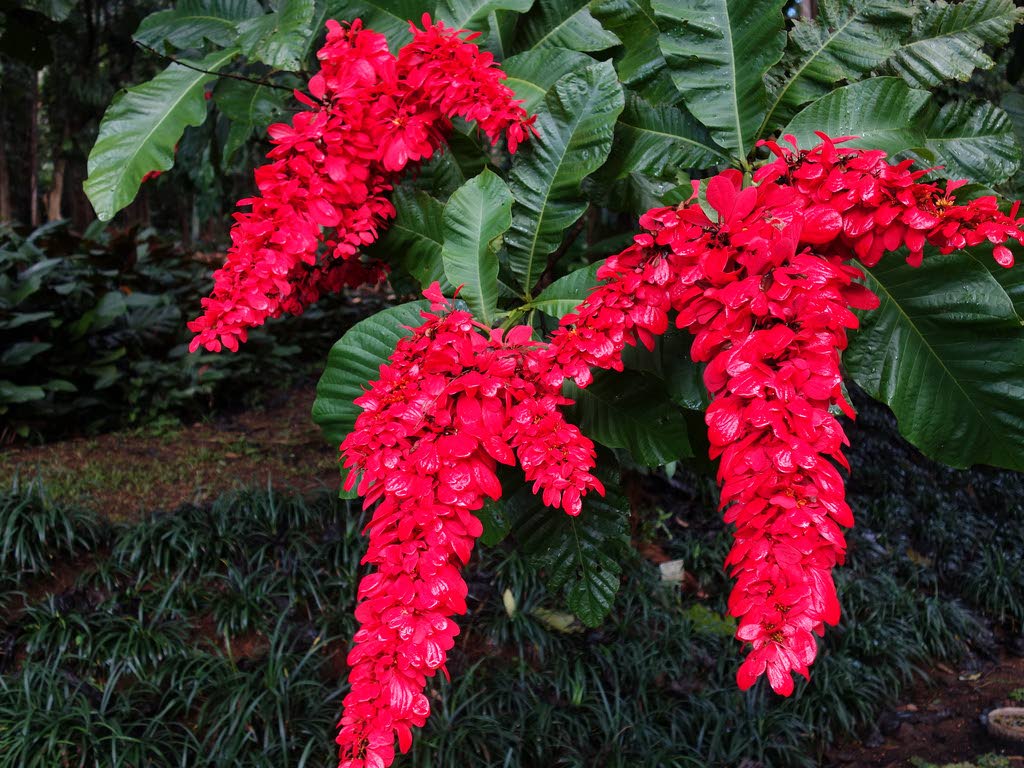 Prof Emeritus E Julian Duncan In 1844, the Polish botanist Jozef Warszewicz was sent to Guatemala to join a Belgian company established there. He became an independent collector and supplier of plants to gardens in Europe. He travelled extensively in Guatemala, Panama and Costa Rica, where he discovered a wealth of new plant species. Among these was Warszewiczia coccinea (Vahl) Kl, a member of the Rubiaceae (the family to which plants such as Coffea arabica (coffee) and Mussaenda (ornamentals) belong). The plant is a native of the New World and is found in a vertical band straddling the equator, from Costa Rica in the north to equatorial Peru and Brazil in the south. This strip includes Trinidad. In their 1928 publication of Part I Flora of Trinidad and Tobago, Williams and Cheesman, treated the Rubiaceae and recorded the presence of the plant in Trinidad. In addition to a botanical description of the plant, they recorded the names by which it is known locally. These are Trinidad Pride, wild poinsettia and Chaconier. They described the plant as being "a gorgeous plant, forming one of the The plant produces a long bloom that is a panicle, a long arching axis, along which are paired cymes–groups of flowers with a common stalk (peduncle). Each cyme consists of 15-20 flowers. The flowers all have five green sepals, five yellow petals which are fused at the base to form a short tube topped by five free lobes, five anthers and centrally, the pistil. In one of the flowers, of each cyme, one of the sepals is transformed into a red, long-stalked petal-like structure, which gives the bloom its attractiveness. Since the cymes are paired along the axis, there are twice as many of these transformed sepals as there are pairs of cymes along the axis. It is often reported that "it is the national flower of Trinidad and Tobago because it blooms on August 31, which coincides with the day that Trinidad and Tobago became independent from the United Kingdom." This statement can be easily misunderstood. In reality it blooms from February to November, peaking in July. Independence Day thus falls during the period in which it is in full bloom. most attractive features of the flora of Trinidad." (Williams and Cheesman, 1928). There are two legends associated with the more commonly used of the local names, one of which states: "The title is in honour of the last Spanish Governor of Trinidad and Tobago Don Jose Maria Chacon." This appears to be based on the mispronounced Chaconia, and hence misspelled, local name originally given. The second is based on the recorded name–Chaconier, (Williams and Cheesman, 1928), the name given by the early French settlers. Many of the local names given by them, end in "ier", such as balisier (now pronounced differently) to the Heliconia, and Cocotier (now called cocoyea), to the coconut among others. It is recorded that the red, transformed sepals reminded them of the ribbons of silk or cotton attached to the garments of dancers of the chacone (sometimes rendered chaconne or chacona), a peasant dance popular in Spain and France in the 18th century. In Spain these decorations were called chaconadas. In 1957, Grace Mulloon (nee Atteck) travelling along the Arima/Blanchisseuse road, in the company of David Auyong, spotted a rather spectacular bloom at the top of a group of Chaconiers. Realising the importance of their find, Auyong parked the car and at risk to both limb and life, clambered down the steep slope to obtain cuttings which he hoped to use as propagating material. His attempts were unsuccessful; he therefore solicited the help of Roy Nichols, who worked at the Imperial College of Tropical Agriculture (ICTA). When success was achieved, they returned to the site from which the material had been collected, only to discover that the plant had been cut down in a road widening exercise (Nichols 1963). A plant was sent to Kew gardens in England where it was confirmed to be a mutant of W coccinea. Had Auyong not persisted in his attempts to propagate their find, we would never have known the plant. It is recognised to be a mutant of W coccinea and has been given the cultivar name, David Auyong. The main difference between the wild type and the mutant is that in the former, one sepal of one flower in the group of 20 is transformed, whereas in the latter all the sepals of all the flowers of any cyme are enlarged to some extent and red; in many, the transformation is as extreme as that in the wild type sepal. The wild type is commonly referred to as the single and the mutant as the double Chaconier. These terms are unfortunate and have led to an incorrect statement recorded in Margaret Barwick’s Tropical and Subtropical Trees: An Encyclopedia. Referring to Warszewiczia coccinea she states, "The double flowered form lacks a functional pistil and does not produce fruit." (Barwick, 2004). This statement is no doubt brought about by the use of the term double to describe the flower, for in strict botanical terms, a double flower is one in which there is an increase in the number of petals or petal-like structures in place of stamens and/or carpels. Such flowers are thus sterile. The increase in the number of petal-like structures in W coccinea cv David Auyong is brought about by the transformation of sepals. The stamens are present and functional, as is the pistil. There is no record of the mutant origination elsewhere. Although plants can now be found growing in other countries, these are all clones of the plant spotted by Mulloon. The inflorescence of the mutant form, which was recently named the national flower, replacing that of the wild type, is truly Trinidad pride. References * Barwick, Margaret (2004) Tropical & Subtropical Trees: An encyclopedia. Timber Press, Oregon 484pp. * Nichols, Roy (1963) ‘A new Cultivar of Warszewiczia coccinea’ Journal of the Royal Horticultural Society Vol. 88 (9), 406-408. * Williams, R O and Cheesman, E D (1928) Flora of Trinidad and Tobago–Rubiales. Vol 2 Part 1. Department of Agriculture. The Government Printery, Port of Spain 1-48 Nine years ago, Dennis McClung had a rundown swimming pool and an ambitious goal, to plant a garden that would provide a self-sustaining food system for his family.
McClung and his wife transformed the empty cement pit behind their home in Mesa, Arizona, into a closed-loop ecosystem teeming with life, from vegetables to chickens, even a pond with tilapia. The innovative urban farm was soon producing enough food to feed the couple and their three young children, cutting their monthly grocery bill by almost half. But what McClung accomplished after that is even more remarkable. With no formal training, just plenty of ingenuity, hard work, and resourcefulness, McClung is now helping people around the world build climate-resilient and highly productive food systems. Since launching his nonprofit organisation Garden Pool, in 2012, McClung’s backyard experiment has bloomed into a multifaceted operation that is collaborating with foreign governments on food sustainability, operating public seed libraries, offering classes and workshops, developing a solar-powered water sterilisation system and most recently, working on a HoloLens application designed to help users build customised food systems. Though McClung’s farming methods might be low-tech, the technology he uses to power his organisation is not and driven by Microsoft. He uses Windows 10, Office 365 and a Surface device for graphic design, research, proposals, and marketing; collaborates with employees and volunteers remotely via Microsoft Teams; and uses Skype to teach a 3D modelling course to interns. Working with Chaney St Martin who is based in T&T, the Golden Grove Prison became the site of his latest imitative where inmates had been tending an enclosed garden in a field by hauling watering cans back and forth in the blazing heat. McClung set up a self-irrigating water collection system and a fish pond and added vertical growing, raising plants in stacked layers instead of in the ground to boost the garden’s production. Prison administrators were so excited about the changes that they asked for their own training session. “They said the project served as a model for them to do the same thing on their own farms,” says Chaney St Martin, an international specialist in water and soil management for the Inter-American Institute for Cooperation on Agriculture (IICA), which partnered with Garden Pool on the Trinidad project and several others in the Caribbean. There was almost no budget for the Trinidad prison project, McClung said, so instead of using a premade liner for the fish pond, he made one by mixing cement and sand. He built the pond’s pump from spare pipes and used some old cement blocks to create raised garden beds. “We really had to be MacGyver on this one, because the prison really didn’t have any budget,” McClung says, laughing. “We just looked at what they had, and we got really creative.” St Martin, met McClung at a conference a few years ago. The two got talking and resolved to work together in the Caribbean. When Hurricane Irma raged through the region in September 2017, devastating several islands, they seized the opportunity to help. McClung, unencumbered by the bureaucracy of a large organisation, and his data quickly mobilised resources and arrived on the ground to work with the IICA, St Martin said. “It was a tremendous effort. If you understand the Caribbean context, people tend to be suspicious when outside organisations come in,” he says. “But Dennis was able to come in and blend in very easily with the culture. People really loved the work that he did.” McClung is turning to data collection to validate and quantify his models for sustainable farming. He’s working with governments in countries where Garden Pool has conducted projects to collect data on farm yields, productivity, and costs, and is partnering with Joel Cuello, a professor of agricultural and biosystems engineering at the University of Arizona and an expert on vertical farming, on the HoloLens project. With his first international office based in Trinidad, using datasets from their work, McClung and Cuello plan to develop a HoloLens app using Microsoft AI and other services that will allow users to select a food system model and scale it to a particular space. The app will tell them how much the project would cost, what materials are needed and how much it would produce. The goal is to have a prototype by the end of next year, Cuello said. He sees information sharing as critical to Garden Pool’s ultimate goal of promoting global food security. “No one on this planet should be hungry with the technology available to us right now,” he says. “It’s just a matter of using it efficiently and spreading it to those who need it. “The fact that we’re changing the world is more important to me than being rich or taking the fame and the glory for it,” McClung says. “I’d rather share the knowledge so that others can do for themselves.” Source: Trinidad Guardian, Dec 2018 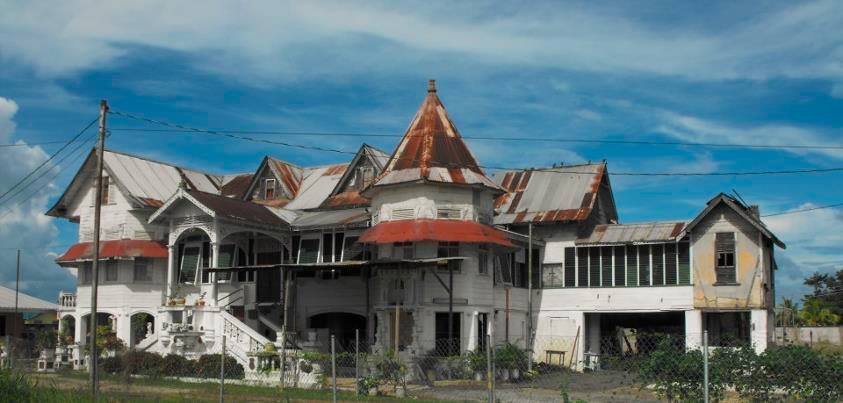 A few weeks ago, the country lost one of its most valuable architectural treasures. For generations, the magnificent Friendship Hall Great House stood astride the Southern Main Road, just north of St Mary's Junction in Freeport and reminded us of an era long gone. Not only was the structure imposing in its sheer size, but also for its eccentric style and the story it bore. Constructed in the 19th century, it was initially a prime example of colonial plantocracy architecture which far outshone the less substantial planters' residences which dotted the sugar cane fields of central Trinidad. Its owner was an eccentric Scotsman named Norman McLeod who had served as an officer in the British East Indian Regiment in the early 1900s. Whilst in India he apparently underwent a conversion to Hinduism and upon his return to Trinidad he employed his considerable artistic ability in transforming his palatial home into a mandir. On the ground floor, the goddess Durga peered forth, while on the sweeping portico, McLeod placed a self-portrait, wearing a turban. He even constructed a throne with the words "Friendship Hall" above it. The Scotsman filled his home with priceless treasures ranging from a World War I German bugle to invaluable silver from India. Gripped with a growing delusion that the young daughter of one of his Indian servants was a reincarnation of his dead mother, McLeod willed his mansion to them when he died in 1965. We live however, in a nation where all but a few place no value on the legacy of the ages. Friendship Hall fell into neglect and after nearly five decades of decay, was bulldozed into the ground to make way for concrete blasphemies which are a sad travesty of the Scotsman's gift to his heirs. As appalling as this assault on our built heritage is to conceive, it is but a single chapter in a long history of annihilation which cannot be blamed on any one person or sector, since it is a reprehensible burden we must all bear as a people. The basic argument which may be proffered for the fate of Friendship Hall is that without legitimate state support, this is to be the future of many of our historic structures which exist in private hands which are either unappreciative of their significance or cannot afford to sustain them. Part of the problem stems from a scarcity of compassion and public edification regarding the value of heritage assets. There are now two ministries dedicated to multiculturalism and tolerance, yet nothing has been done to inculcate a sense of national pride in our past. Students are still taught that Columbus sighted Trinidad from the helm of the Santa Maria accompanied by the Nina and Pinta, even though he was barely able to walk from a smart attack of gout and all three ships had been sunk years before. I dare say if the owner of Friendship Hall Great House had possessed a cultured appreciation for what was gifted into his care, it would not have been destroyed. The wholesale slaughter of leatherback turtles but a couple decades ago has been all but halted, thanks largely to the foundation of a sense of ownership which was instilled in the minds and hearts of those who shared a common breathing space with the turtles. Most communities in possession of heritage assets cannot see the economic opportunities which can arise from these treasures. This is another page we can take from the book of the leatherback turtle story, since turtle-watching is now a lucrative money-earner for several sectors, spawning downstream industry on a micro-economic scale. Lest it be said that I lambast the State too sternly, an example must be drawn from the awful condition of the Magnificent Seven. These turn-of-the-century masterpieces appear in virtually every tourist guidebook which beckons the unsuspecting to view a spectacle which must surely stand as an indictment against us. From the boarded-up windows and unkempt lawns of Mille Fleurs to the threadbare grandeur of Whitehall, successive administrations have gleefully ignored their responsibility to history. Those few public institutions dedicated to conservation have consistently failed in their mandates and seem quite happy to continue on their losing streaks while our past is trampled and lost. I recently visited the National Museum and it pains me exceedingly to see the vast potential for public education therein and the deficiency of interest which is shown in it. The proverbial icing on the cake in the visit was that in one section, artefacts were strewn willy-nilly with no security, begging the souvenir hunter to pocket one of our national treasures. There is a Restoration Unit within the Ministry of Works and Infrastructure. Had I not been aware of its presence, I would be as stunned as most people would be to learn that such a high-minded department could exist within the wreckage of our civil service. One only has to look at our communal architectural treasures to see the impact of the unit on the landscape: the still-caved roof of President's House, the fire-gutted shell of what used to be the historically significant San Fernando Police Station and the sapling which threatened to grow into a mighty tree from the roof of the now dismally abandoned Red House. The lack of zeal or even periodic enthusiasm from the public sector towards preservation is really an extrapolation of a national mentality which frowns on the past. Our own first prime minister, Dr Eric Williams, was, most ironically, a historian. Even more than three decades after his death, the effects of "doctor politics" still shape the general psyche of the nation, wherein he transferred his inner demons of his own exclusion from colonial elite society to his people, teaching us that all that was connected to massa was bad and should be obliterated if we were to find ourselves. In this way, we indemnify the Plantation Society model of the late, great Lloyd Best, since our idea of nationalism finds expression in raging against the European metropole and its relics by extension. We are a plural society thrown into each other's company with no real formation of the characteristics of a nation. Yet, amid the morass of destruction and callous ignorance, there are beacons of hope. For many years, a small band of dedicated people calling themselves Citizens for Conservation has been striving against enormous odds (political obstacles being the most frequent) to raise the national consciousness of our heritage and to persuade the relevant authorities of each administration to take a vested interest in preservation lest all be lost too soon. I doubt any of the members of Citizens for Conservation throw a good javelin or sing melodious rum-drinking ditties, but this is an organisation which truly deserves a medal for the tireless commitment to history of its members. Citizens for Conservation stalwart architect Geoffrey MacLean has devoted a lifetime to conservation and singlehandedly rediscovered our great 19th-century artist Michel Jean Cazabon and his works. Only recently Geoffrey and I were bewailing the fact that during the 1970s and well into the 1990s, most of our architectural heritage had been destroyed in the name of progress. Called to mind were the demolition of Bagshot and Perseverance Houses in Maraval, the Ice House Hotel on Abercromby Street, Port-of-Spain, and the old Customs House on the waterfront. The loss to posterity has truly been immense. Our most current dialogue on the demise of Friendship Hall Great House had a tone akin to that of lamenting the demise of an old friend. There is only so much that can be done by those of us who have spent our lives in ferreting out forgotten history and coping with the ever-expanding wasteland which our heritage landscape has become. Government malaise, ignorance of the general citizenry and corporate greed have combined to form a daunting front against conservation and as long as we see no value to cherishing the legacy of our ancestors, we face a very grim future, for it is from the glories and teachings of the past we must draw on to find inspiration for tomorrow. If this is indeed our lot, where then can future generations turn to find themselves? Source: Virtual Museum of T&T Archives (Sept. 08 2012)  A Trini Christmas is the best. And in large, contributing to this are our festive Christmas foods. We have perfected the grand art of fusion and created an original cuisine for this season. Some food gurus thumb their noses at the term fusion, however, we would not have this outstanding cuisine if our ancestral cooks had not utilised the art of fusion. Really, what they tried to do is recreate the familiar foods of their past, using ingredients available to them locally, and so through the years, we inherited what we know as our true Trini Christmas cuisine. These include boiling hams in pitch-oil tins, soaking black cake fruits for up to one year in advance to use in our black cakes; securing fig leaves to wrap pastelles, stocking up on enough rum for use in black cake and ponche de crème and baking bread to sandwich the ham and preparing garlic pork. Making pepper jelly and chow-chow to dress our meals, and preparing sorrel and ginger beer to cool us all down. Most of these traditions still live on today, thankfully, although some have sadly been substituted for more non-traditional foods at this time. For me, I am a lover of tradition and our Christmas cuisine. Making black cake is a big part of my Christmas tradition which I begin in October. I soak my fruits in a mixture of rum and cherry brandy for up to one month or more. I omit the browning, which I think imparts a bitter flavour to the cake, and I use a higher ratio of fruit which results in a dense, moist and very dark cake. It’s important to continue nursing the cake after baking for a few days with your choice of rum or brandy to keep it moist until use. Of course, you can opt for a non-alcohol version by replacing the alcohol with pure grape juice. And if you are not a lover of dark fruit cake, you can make a light fruit cake which is equally alluring on a different level! Light fruit cake 1 cup butter 1 cup granulated sugar 4 eggs 1/2 cup raisins 1/2 cup candied cherries, finely chopped 1/2 cup mixed peel 1/2 cup chopped walnuts or almonds, (optional) 2 cups all-purpose flour Preheat oven to 325 degrees. Finely chop fruits. Grease, line and flour 1 nine-inch round pan. With an electric mixer, cream butter and sugar until light and creamy, about 5 minutes. Add eggs one at a time beating well between additions. Fold in flour and fruits. Pour batter into a 9-inch round pan. Bake for about 11/2 hours. Cool. Best ever Christmas black cake 1 lb raisins 1 /2 lb currants 1/2 lb sultanas 1/2 lb prunes 1/2 lb chopped walnuts 1/4 lb mixed peel 1/4 lb cherries 1 2/3 cups dark rum 1 2/3 cups cherry brandy 1 lb Butter 1 lb all-purpose flour 3 tsp baking powder 1 lb brown sugar 6 eggs 1 tsp cinnamon and allspice, mixed 2 tsp mixed essence Combine rum and cherry brandy and add fruits to mixture. Let soak overnight or up to one week. Preheat oven to 300F. Cream butter and sugar until light and fluffy. Add eggs one at a time, beating well after each addition. Sift together flour and baking powder, cinnamon and allspice. Drain fruits reserve liquid. Chop or mince in food processor. Add drained fruits to butter and sugar mixture. Add cut up cherries and nuts. Fold flour into fruits and butter mixture. Add mixed essence, mix well. Grease and line two 9-inch cake pans with waxed paper, grease and flour paper. Spoon cake batter equally into prepared baking pans. Bake for 2 to 2 1/2 hours. Source: Newsday, Dec 2018 |
T&T news blogThe intent of this blog is to bring some news from home and other fun items. If you enjoy what you read, please leave us a comment.. Archives
July 2025
Categories
All
|

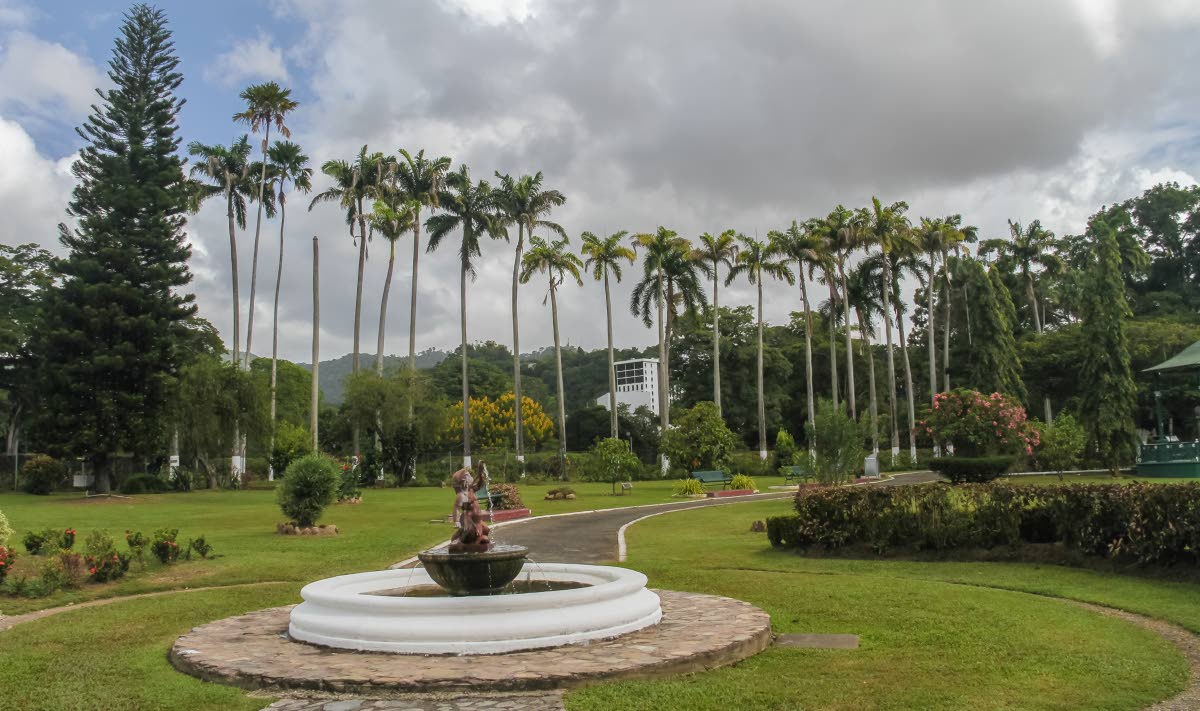

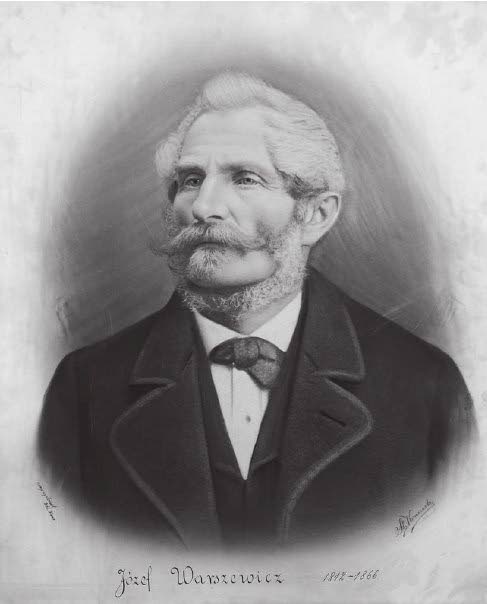
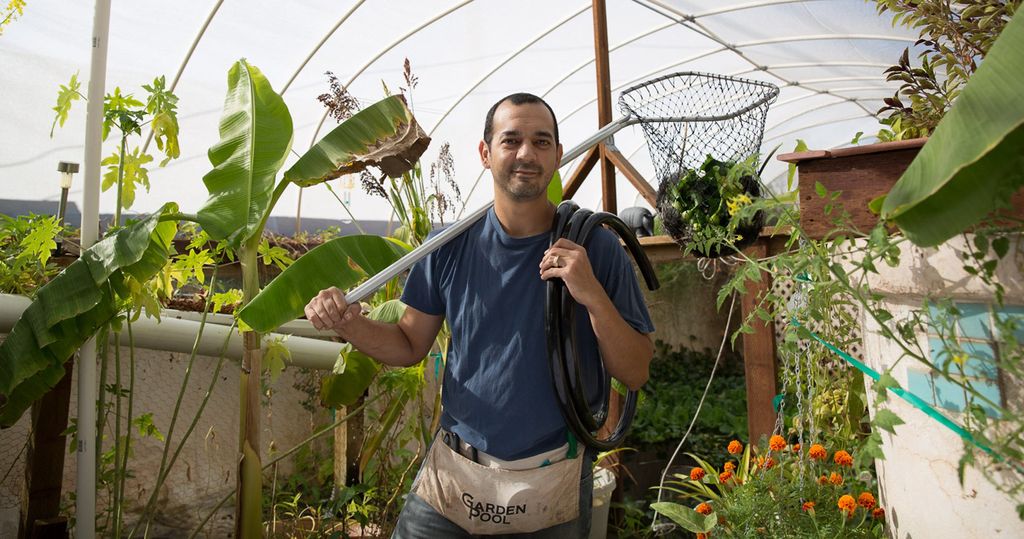


 RSS Feed
RSS Feed